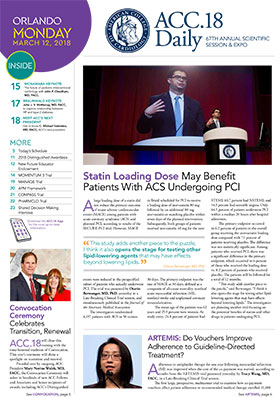APM Framework Helping Practices, Clinicians Navigate Changing Health Care Landscape
The continued transition from a health system focused on volume to one focused on value is driving clinicians toward alternative payment models (APMs). However, understanding APMs and knowing how and when to participate poses significant challenges for cardiovascular professionals.
“Helping ACC members understand and successfully participate in APMs is a strategic priority of the College,” said APM Workgroup Chair Paul N. Casale, MD, MPH, FACC. “Some of the challenges for clinicians as they consider participating in APMs include an understanding of the appropriate staffing and capital needs, the need for practice redesign, the ability to manage the regulatory burdens, and the uncertainties on reimbursement.”
"Alternative payment models are here to stay ... The more prepared that practices, clinicians and administrators are for this reality, the greater the chances of being successful in these programs." — Paul N. Casale, MD, MPH, FACC
According to Casale, ACC’s newly launched APM Framework is the College’s answer to helping members navigate APMs. “We heard from members about a desire for information to aid in their understanding of APMs,” Casale said. “They asked us to help them identify the capabilities needed to be successful in an APM – and we did.”
While not intended to be a prescriptive guide, ACC’s APM Framework is focused on four categories: 1) organizational readiness; 2) clinical practice transformation; 3) reporting and analytics; and 4) financial risk. “This enables ACC members to self select criteria that are applicable to their particular clinical practice setting,” Casale said.
Under each category, the Framework offers a series of questions that introduce concepts that ACC members should consider when evaluating participation in APMs. For example, the “Organizational Readiness” section of the Framework walks through questions and considerations related to approaches to value-based payment strategies, external partnerships, workforce and other key elements. Casale notes that those completing the “Practice Transformation” section should be able to assess their clinical care redesign capabilities prior to APM participation. Practices can explore key considerations regarding their reporting and analytics infrastructure, including integrating electronic health record, claims, and payer-supplied data, under the “Reporting and Analytics” category.
While the overwhelming majority of providers are currently not subject to downside financial risk in either xgovernment or commercial APMs, Casale said the “Financial Risk” category is critical for clinicians and practices. “Practices have to understand the cost of care in their practices and health systems. The business and performance risks must be understood prior to participation,” he cautioned.
ACC’s APM Framework is intended to cover all forms of value-based payment arrangements, including accountable care organizations, bundled payment programs, global or population payments, and/or other government and commercial value-based arrangements. “Alternative payment models are here to stay,” said Casale. “The more prepared that practices, clinicians and administrators are for this reality, the greater the chances of being successful in these programs.”
Keywords: ACC Publications, ACC Scientific Session Newspaper, ACC Annual Scientific Session
< Back to Listings

